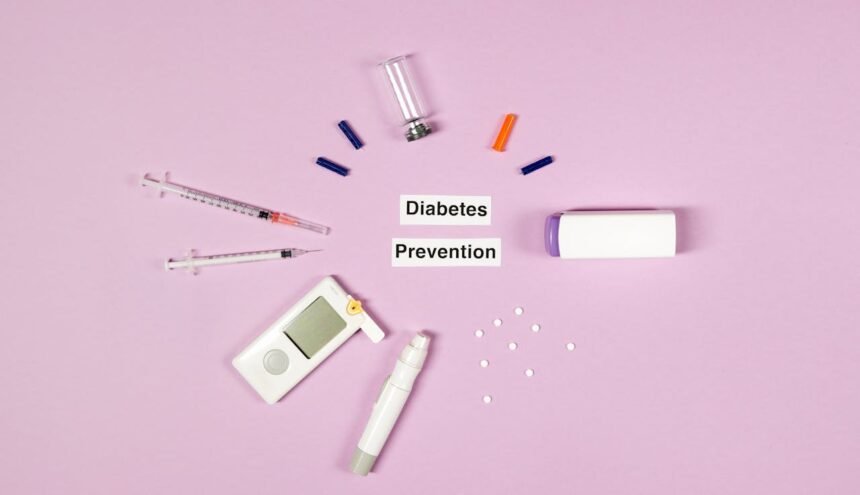Type 2 diabetes has become one of the most prevalent health conditions in the United Kingdom, affecting over 4.9 million people according to Diabetes UK. This comprehensive guide explores the essential aspects of Type 2 diabetes, providing crucial information for those diagnosed with the condition, their families, and individuals at risk.
What Is Type 2 Diabetes?
Type 2 diabetes is a chronic metabolic disorder characterised by elevated blood glucose levels due to insulin resistance or insufficient insulin production. Unlike Type 1 diabetes, which typically develops in childhood, Type 2 diabetes usually manifests in adulthood, though increasingly younger individuals are being diagnosed.
The condition occurs when the body’s cells become resistant to insulin, a hormone produced by the pancreas that regulates blood sugar levels. Over time, the pancreas may struggle to produce adequate insulin to overcome this resistance, leading to persistently high blood glucose levels.
Recognising the Symptoms
Early detection of Type 2 diabetes symptoms can significantly improve long-term health outcomes. The NHS identifies several key warning signs:
Primary Symptoms:
- Excessive thirst (polydipsia)
- Frequent urination, particularly at night
- Unexplained weight loss
- Persistent fatigue and lethargy
- Blurred vision
- Slow-healing cuts and wounds
Secondary Symptoms:
- Recurring infections, particularly thrush
- Numbness or tingling in hands and feet
- Increased hunger despite eating regularly
- Mood changes and irritability
Many individuals with Type 2 diabetes experience subtle symptoms that develop gradually over months or years. This gradual onset often leads to delayed diagnosis, emphasising the importance of regular health screenings, particularly for those with risk factors.
Understanding the Causes and Risk Factors
Type 2 diabetes results from a complex interplay of genetic and environmental factors. Research from the British Medical Journal indicates that whilst genetics play a role, lifestyle factors are often the primary drivers of the condition.
Major Risk Factors:
- Age and Ethnicity: Individuals over 40 (or 25 for South Asian populations) face increased risk
- Family History: Having a parent or sibling with diabetes doubles the risk
- Obesity: Particularly central obesity (excess weight around the waist)
- Physical Inactivity: Sedentary lifestyle significantly increases risk
- Diet: Regular consumption of processed foods, sugary drinks, and refined carbohydrates
- High Blood Pressure: Hypertension often coexists with diabetes
- Previous Gestational Diabetes: Women who developed diabetes during pregnancy
Environmental Factors:
- Chronic stress and inadequate sleep
- Smoking and excessive alcohol consumption
- Certain medications, including steroids
- Polycystic ovary syndrome (PCOS) in women
The World Health Organization emphasises that many Type 2 diabetes cases are preventable through lifestyle modifications, particularly maintaining a healthy weight and regular physical activity.
Diagnosis and Testing
Healthcare professionals use several diagnostic methods to confirm Type 2 diabetes. The National Institute for Health and Care Excellence (NICE) provides clear guidelines for diagnostic procedures:
Diagnostic Tests:
- HbA1c Test: Measures average blood glucose levels over 2-3 months
- Normal: Below 42 mmol/mol (6.0%)
- Pre-diabetes: 42-47 mmol/mol (6.0-6.4%)
- Diabetes: 48 mmol/mol (6.5%) or above
- Fasting Plasma Glucose: Measures blood sugar after 8-hour fast
- Normal: Below 6.1 mmol/L
- Pre-diabetes: 6.1-6.9 mmol/L
- Diabetes: 7.0 mmol/L or above
- Oral Glucose Tolerance Test (OGTT): Measures response to glucose load
- Normal: Below 7.8 mmol/L (2 hours post-glucose)
- Pre-diabetes: 7.8-11.0 mmol/L
- Diabetes: 11.1 mmol/L or above

Comprehensive Management Strategies
Effective Type 2 diabetes management requires a multifaceted approach combining lifestyle modifications, medication when necessary, and regular monitoring. The Diabetes UK provides evidence-based guidelines for optimal management.
Dietary Management:
The cornerstone of Type 2 diabetes management involves adopting a balanced, sustainable eating plan. Rather than restrictive diets, focus on:
- Carbohydrate Awareness: Understanding how different carbohydrates affect blood glucose
- Portion Control: Using the plate method (half vegetables, quarter protein, quarter carbohydrates)
- Regular Meal Timing: Avoiding long gaps between meals
- Whole Food Focus: Emphasising minimally processed foods
- Fibre-Rich Foods: Including plenty of vegetables, fruits, and whole grains
Physical Activity:
Regular exercise improves insulin sensitivity and helps manage blood glucose levels. The NHS recommends:
- Aerobic Exercise: 150 minutes of moderate-intensity activity weekly
- Resistance Training: Twice weekly strength-building exercises
- Daily Movement: Breaking up sedentary periods with light activity
- Enjoyable Activities: Choosing sustainable, enjoyable forms of exercise
Medication Management:
When lifestyle modifications alone are insufficient, various medications can help manage Type 2 diabetes:
- Metformin: Usually the first-line treatment, reducing glucose production
- Sulfonylureas: Stimulate insulin production
- DPP-4 Inhibitors: Help regulate blood sugar levels
- SGLT-2 Inhibitors: Increase glucose excretion through kidneys
- Insulin: Reserved for advanced cases or when other medications prove inadequate
Monitoring and Complications Prevention
Regular monitoring is essential for preventing diabetes-related complications. The Royal College of Physicians emphasises the importance of comprehensive care:
Regular Health Checks:
- Annual diabetic eye screening
- Foot examinations for neuropathy signs
- Kidney function tests
- Blood pressure monitoring
- Cholesterol level assessments
Potential Complications:
Understanding potential complications motivates adherence to management plans:
- Cardiovascular Disease: Heart attacks and strokes
- Diabetic Retinopathy: Eye damage potentially leading to blindness
- Diabetic Nephropathy: Kidney damage and potential failure
- Diabetic Neuropathy: Nerve damage, particularly in extremities
- Poor Wound Healing: Increased infection risk
Living Well with Type 2 Diabetes
A Type 2 diabetes diagnosis need not limit life aspirations. Many individuals with diabetes lead full, active lives through effective management. The Diabetes UK community provides invaluable support and resources for newly diagnosed individuals.
Key Success Strategies:
- Consistent medication adherence
- Regular blood glucose monitoring
- Maintaining social connections and support networks
- Staying informed about condition management
- Working closely with healthcare professionals
Technology and Support:
Modern technology offers unprecedented support for diabetes management:
- Continuous glucose monitors
- Smartphone apps for tracking blood sugar
- Online support communities
- Telehealth consultations
Prevention and Remission
Exciting research from Newcastle University has demonstrated that Type 2 diabetes remission is possible through intensive lifestyle interventions, particularly significant weight loss in early-stage diabetes.
Remission Criteria:
- HbA1c below 48 mmol/mol (6.5%) for at least six months
- No diabetes medications
- Sustained through lifestyle changes alone
The DiRECT trial showed that nearly half of participants achieved remission through structured weight management programmes.
Conclusion
Type 2 diabetes represents a significant health challenge, but with proper understanding, management, and support, individuals can maintain excellent quality of life whilst minimising complications. Early intervention, consistent lifestyle modifications, and regular medical care form the foundation of successful diabetes management.
For those newly diagnosed or concerned about diabetes risk, consulting healthcare professionals and accessing resources from established organisations like Diabetes UK and the NHS provides the best starting point for effective management.
Remember, Type 2 diabetes management is a marathon, not a sprint. Small, consistent changes often yield the most sustainable and significant long-term benefits for health and wellbeing.






